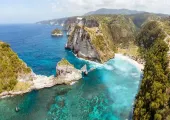Nature Lovers' Guide to Auckland New Zealand
Catalogue
- Goat Island
- Lake Pupuke
- Waiheke Island
- Mount Eden
- Bay of Islands
- One Tree Hill
- Auckland Ferry Terminal
- Sky Tower
- Holy Trinity Cathedral
- Saint Mary’s Church
- The University Of Auckland
- Auckland Harbour Bridge
Show More
Auckland, New Zealand, is a beautiful city that lies in the North Island. It is a cosmopolitan, diverse, and multicultural city with the largest Polynesian population in the world. The city is nestled between mountain ranges on the north-west and south-east and water bodies to the east and south-west. The isthmus on which the central part of urban Auckland rests, likes between the Manukua Harbour of the Tasman Sea and Waitemata Harbour of the Pacific Ocean. The Hunua Ranges and the Waitakere Ranges- line the city surroundings with hills that have many dormant volcanoes.
Auckland is known for some classic cultural events and number of art events and festivals are held here, annually. The city has also been nicknamed ‘City of Sails’ due to harbours on both sides, meaning that one in every three houses in Auckland owns a boat. The city is also well known for its green spaces and park. Here, however, is a list of places in Auckland, New Zealand, that will thrill nature lovers and tourists to the core.
Goat Island is one of the most scenic islands in Auckland, New Zealand. The little island is also known as Te Hawere-a-Maki in Maori. It is spiritually significant to a local Maori tribe because their ancestral canoe (waka) landed closeby. It is also known as Cape Rodney/ Okakari Point Marine reserve. The most obvious way to enjoy and explore the island and the marine inhabitants is to get into the water with your snorkelling gear. The sands and the rocks near the shore can be easily explored with a snorkel and mask while divers will get a deeper insight into the marine life off Goat Island. Divers get to see some amazing aquatic life with each change in habitat like sand flats, deep reefs, rocky shores, and underwater canyons and cliffs. Ever habitat forms its own community of sea life. Divers should be very careful not to step on or destroy fragile marine life such as lace corals, gorgonian fans, and sponges. Rockpool creatures are visible during low tides, and several varieties of shellfish and fish can be seen. There are two coastal walkways that lead to the Goat Island Bay, and both offer a spectacular view of the coast. You will find gorgeous picnic spots along these walkways as well.
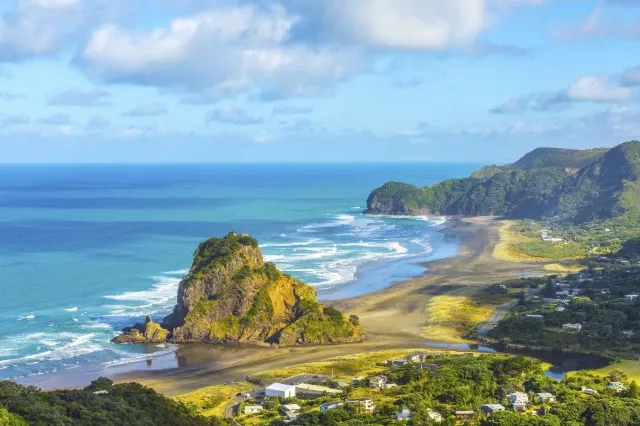
Nestled into the North Shore of Auckland New Zealand, is Lake Pupuke, which is a splendid volcanic fill-in that spans 107 hectares. Millenia ago, when a volcano erupted, it formed a basin instead of a hill. It is closest to the suburbs of Milford and Takapuna. The lake is now an important dive site and is also used for other popular sports such as kayaking and sailing. Pupuke is also an ideal place to take your children for an outing to feed geese and ducks. Patrons are even allowed to cast a line and catch some fish at the lake. The lake has trout, tench, Rudd, catfish, goldfish, and perch. The lake is very close to the seashore and gives people the option of doing freshwater and seaside in the same day. The Takapuna pumphouse Theatre in the old pumphouse building shows plays in the evening. The fossilised trees from the volcanic eruptions are still visible around the lake and are quite the sight to see. The lake creates a unique space for recreation, sports training, and events such as weddings and parties.

The second-largest island in the Hauraki Gulf in Auckland New Zealand is the Waiheke Island. It is next only to the Great Barrier Reef in size and is New Zealand’s most populated island. Waiheke is one of the most accessible islands in the gulf, with regular car-ferry services, passenger ferry services, and a helicopter service provided to the island. The island has a 133.5-kilometre coastline with over 40 kilometres of beaches. The highest point of the island is Maunganui, which is 231 metres. Port Matiatia at the western end of Waiheke Island is about 17 kilometres from Auckland. There are many beautiful beaches among which some of the more popular ones are Onetangi Beach, Cactus Bay, Surfdale Beach, Little Palm Beach, Oneroa Beach, Blackpool Beach, Palm Beach, Little Oneroa Beach, and Shelly Beach. Oneroa, Little Oneroa, and Palm Beach have free barbeque facilities and children’s play area, and public toilets. Little Palm Beach is to the west of Palm Beach and is a clothing-optional Beach. Blackpool is great for surfing and kayaking while Surfdale, which is a zoned-in beach, is good for kitesurfing. Onetangi has been used for beach horse-racing for several years. The western end which is least assessible, is a clothing-optional zone as well. Cactus beach is a gorgeous beach due to the beautiful gardens in close proximity but is accessible only by boat or kayak as the land owners have blocked the access via roads. Shelly is a great place for diving at high tide and is a popular choice for families.
Mount Eden is an affluential suburban area in Auckland New Zealand, names after George Eden, the first Earl of Auckland. It is 4 kilometres south of Auckland’s Central Business District (CBD), and it has a road that winds itself around the side of Mount Eden. The road serpents its way down the valley, running south from Eden Terrace to Three Kings. The focus of this suburb is the dormant volcano- Maungawhau. This dormant volcano is a popular tourist spot and is the tallest point in all of Auckland. The region around the hills is made of very fertile soil which is free-draining and mixed in with volcanic debris as scoria rocks. Eden Park, a civic institution, has now become a notable cricket ground and hosts international one-day and test matches. Tourists can also visit the Mount Eden Prison, built from volcanic basalt. Other noteworthy places in Mount Eden are Marino Gardens, Pan’s Garden, 3 different War Memorials, and Mt. Eden Pools. There are beautiful bookstore and vintage clothing stores on Mt. Eden Road and small Asian eateries on Dominion Road that are famous for dumplings.

An enclave of over 140 subtropical islands, near North Island, forms the Bay of Islands. The region is well known for its beaches and water activities. The entire region is an adventure of discovery by daily cruises or kayaking. Around the Tapeka Point has an abundance of wildlife like whales, marlins, dolphins, gannets, and even penguins. Most of the islands in the region have stunning walking tracks, and you will even find camping grounds on Urupukapuka Island. The Bay of Islands region is also well known in Auckland New Zealand for its big-game fishing, well publicised by American Author, Zane Grey. The three inlets to the Bay of Islands are Waikare to the south, Te Puna and KeriKeri to the north-west. Take your pick from several activities while at Bay of Island. You can go on a dolphin cruise, sailing, Kauri Forest Walks, biking and hiking, Hole in the Rock Cruise, fishing charters, parasailing, guided night walks. The Waitangi Treaty Grounds have full-day interactive experiences with powerful Maori Cultural performances, native forests and gardens, carving studio, and an art gallery. They also have a traditional Maori Waka, and Hangi displayed. The Tranquil café overlooks the splendid Bay of Islands, and the view just takes your breath away.
One Tree Hill is another volcanic peak in Auckland New Zealand. It is a memorial place of interest to the Maori. The summit provides a view that reaches across Auckland and allows tourists to sight both the Harbours of Auckland from the top. The hill has a scoria cone that erupted from three craters of which one remains. Two of the craters have been rafted away by lava flow that went in all directions for about 20 square kilometres and making it the second-largest volcanic field after Rangitoto Island. The age of eruption is unknown but seems around 28,000 years old due to the mantling of ash erupted from the ‘Te Tatua-a Riukiuta’ volcano. The One Tree Hill Domain consists of two parks which are Cornwall Park and One Tree Hill Domian. The One Tree Hill is open to public while the Cornwall is a private park. The hill can be reached by foot easily but is closed off by administration after sunset because it was frequented by bike racers. There is a beautiful Obelisk atop the hill that is a memorial for the Maori with a bronze statue of a Maori Warrior standing in front of the Obelisk. There is also an observatory known as the Stardome Observatory. It has two telescopes and a planetarium. The observatory has discovered and named the 19620 Auckland asteroid, among other important research and discoveries.
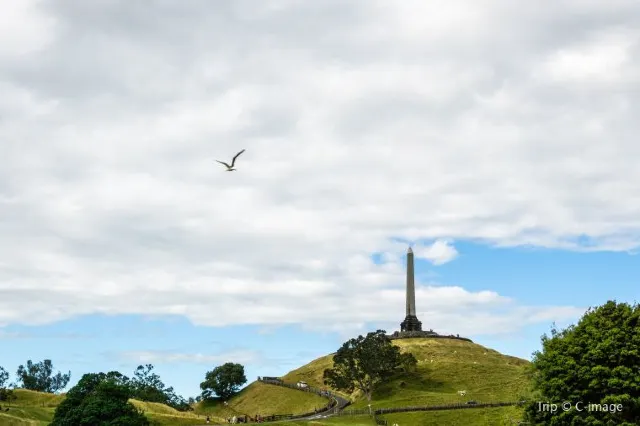
Also known as the Downtown Ferry Terminal or Ferry Building, the Auckland Ferry Terminal is the hub of Auckland ferry network, and it connects Auckland New Zealand, with North Shore suburbs, west and south Auckland, and islands in the Hauraki Gulf and Waitemata Harbour. It is located in the CBD on the Auckland Waterfront. The terminal has two main features. The first is the Edwardian baroque building which is yellow and faces Queen Street. The newer element is the wharves and waiting building which face the Waitemata Harbour. The old building was constructed on reclaimed land and was made of brick and sandstone with a granite base. This building earned the classification of Category I-New Zealand Historic places Trust or Heritage New Zealand. It mainly houses shops and cafes while all ferry operations have shifted to the new building. It stands out as sweet and mellow in complete contrast to the dynamic Auckland skyline behind it.
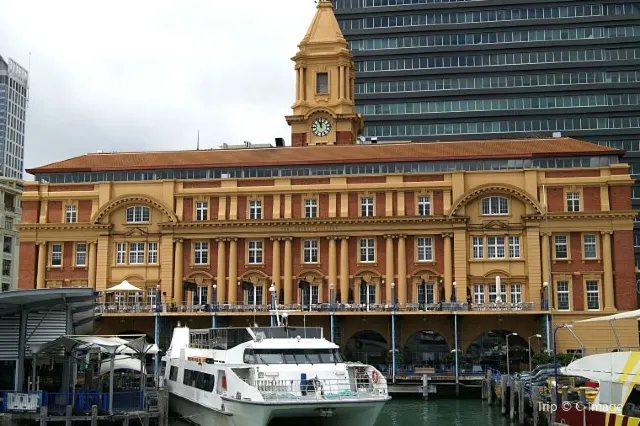
The Sky Tower is Auckland’s telecommunication and observation tower. It is placed at the corner of Federal and Victoria Street inside the city’s CBD. The tower has multiple levels that are accessible to the public. Levels 50 to 60 have some interesting options for tourists. Level 50 has a sky lounge while level 51 houses the main observation deck. Level 52 has New Zealand’s only revolving restaurant, the Orbit 360 dining. Level 53 has the Sugar Cube Dining restaurant, and it also has the skywalk and sky jump. Level 60 is a sky deck that offers a stunning view of the surrounding hills and Auckland’s skyline. Constructed from reinforced concrete, the building stands at 328 metres from base to the topmast. It is the tallest structure in the southern hemisphere. SkyCity Auckland, New Zealand, supports several causes by lighting up the tower in various colours to go with the event they support. They also turned off all lights except for aviation red lights during the winter of 2008 to support energy conservation. The same is continued annually on Earth Hour, Memorial Day, or the death of any Head of State. The tower is open from 9 am onwards.
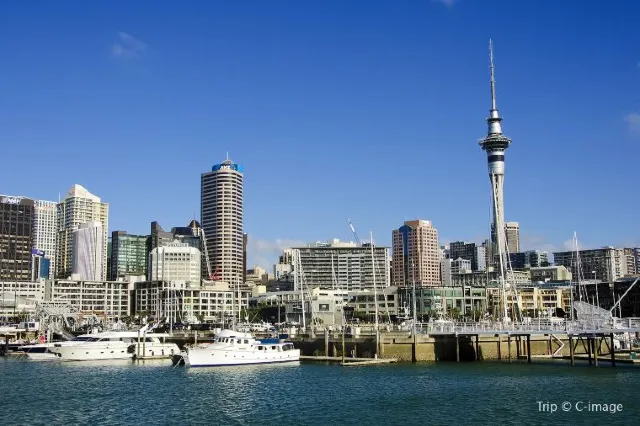
The Holy Trinity Cathedral is a place of worship in Parnell and is the mother church of the Anglican Diocese of Auckland. The first Anglican Church in the city of Auckland New Zealand was the Old St. Paul’s but residents got tired of walking to the old church each time. This led to the construction of the St. Barnabas church on land at the bottom of Parnell. This church fell into disuse and was shifted to a location in Mount Eden and is part of the Parish Church now. The St. Mary’s church, built in Parnell, then proved to be very small and poorly ventilated. In 1886 the old church was demolished. The Chancel of Holy Trinity Cathedral came into use even though its foundation stone had been laid in 1957.
The dedication Nave for the Holy Trinity was conceptualised by Professor Richard Toy. A modern nave was build while retaining the architectural essence of the old Chancel. Neo-gothic and contemporary styles were blended where brick and concrete met wood and glass panelling. The square Nave enables the space to be used for worship and community events. The ridge and furrow roofing system makes it seem like the ceiling is unsupported and the glass doors accentuate light in the vast space.
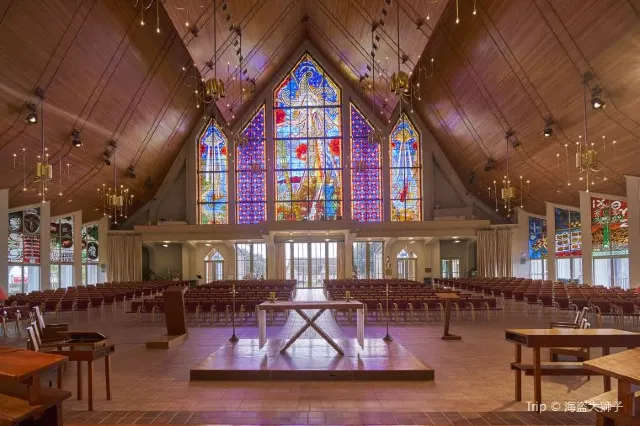
The current St. Mary’s church was built opposite the Hold Trinity Cathedral in Parnell. It was however shifted to the opposite side, right next to the cathedral, in 1952. This church is the former Cathedral Church of the Anglican Diocese of Auckland New Zealand. The wooden gothic style of the church was designed by Christchurch architect Benjamin Mountfort. St. Mary’s is said to be the most impressive church he has ever designed. St. Mary’s covers 9000 square feet area. Gothic motifs are accentuated by numerous gables placed above lancet style windows. The single length gable at the façade gives the building a Swiss-chalet appearance and increases its individuality. The St. Mary’s Church has been registered as a Category I building by the New Zealand Historic Places Trust. In other words, the church is a ‘Heritage’ New Zealand site.

The University of Auckland is the largest University in New Zealand. It is made up of eight faculties and is spread over six campuses. The University began as a constituent college of the University of New Zealand, in 1883. Until 1930 there was little to no research supported by the university. Academic research spiked during the Great Depression, and today the University flourishes in the research field. The clock tower building of the old Arts building in the city campus is a landmark tower and is considered to be of iconic importance to the university. The university’s most prized asset is its Art Collection. It was established in 1966 by Bob Chapman and Keith Sinclair. It is used as a teaching resource, and the collection is available on loan to all campuses in Auckland New Zealand. The collection includes work by great artists such as Billy Apple, Ralph Hotere, and Frances Hodgkins.

The fabulous 8-lane motorway-bridge built over the Waitemata Harbour in Auckland New Zealand, is called Auckland Harbour Bridge. Before the bridge was built, the shortest way to get from Auckland to North Shore was by ferry. The shortest roadway through the North-western Motorway was 50 kilometres. The bridge was built over four years, and it took 180 men to complete construction. It was completed in April 1959 and opened in May 1959. The names of three men killed during construction are recorded on a memorial plaque under the bridge at one end. Originally built as a four-lane highway, Nippon clip-ons were added to either side to make it an 8-lane motorway. These clip-ons have had multiple repairs, wear and tear, and there are now restrictions on vehicle over 13 tonnes using the outer lanes.
Auckland New Zealand is every nature lover’s paradise. With mountain ranges, volcanic crates, groups of islands, beaches, and a gorgeous lake among other things, there is no dearth of places where one can enjoy natural beauty in the city of Auckland New Zealand. Go ahead and enjoy this paradise of green, in New Zealand.
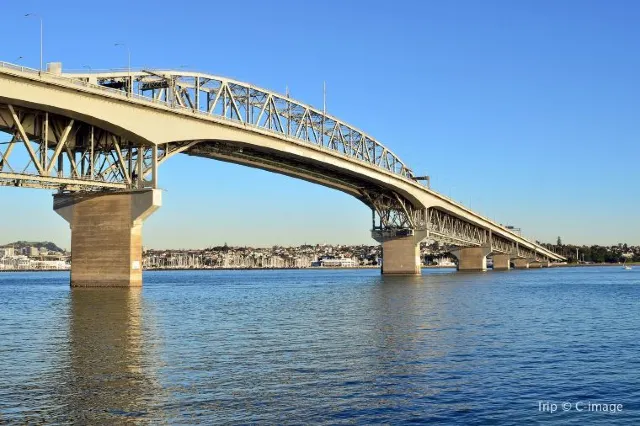
Trending Travelogues
Popular Trip Moments
Popular Travel Types
Popular Attractions
Recommended Attractions at Popular Destinations







Site Operator: Trip.com Travel Singapore Pte. Ltd.



